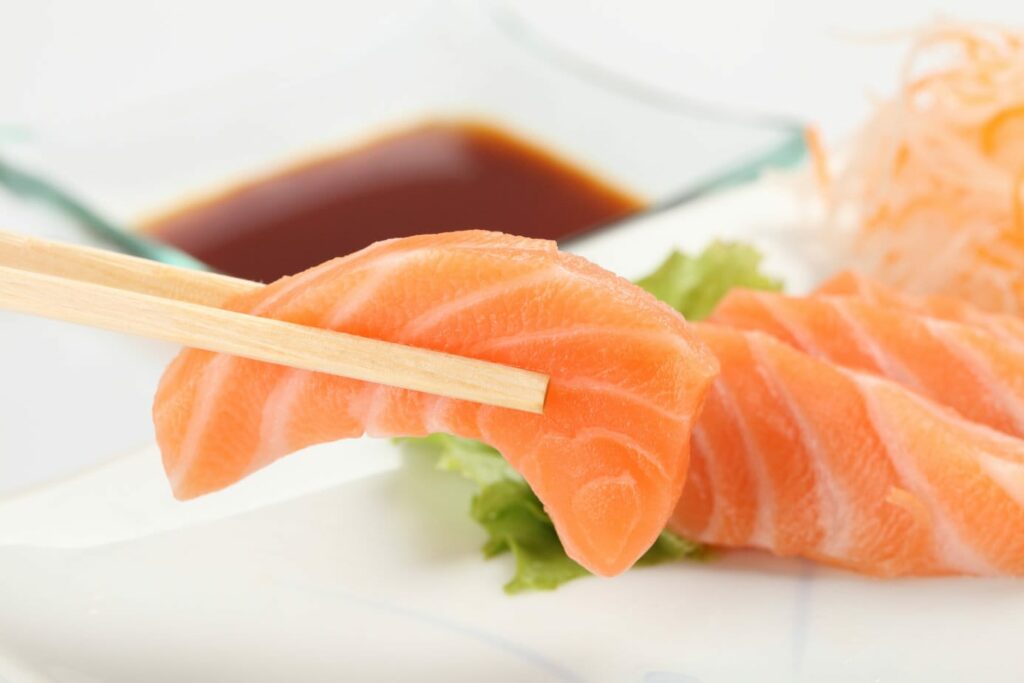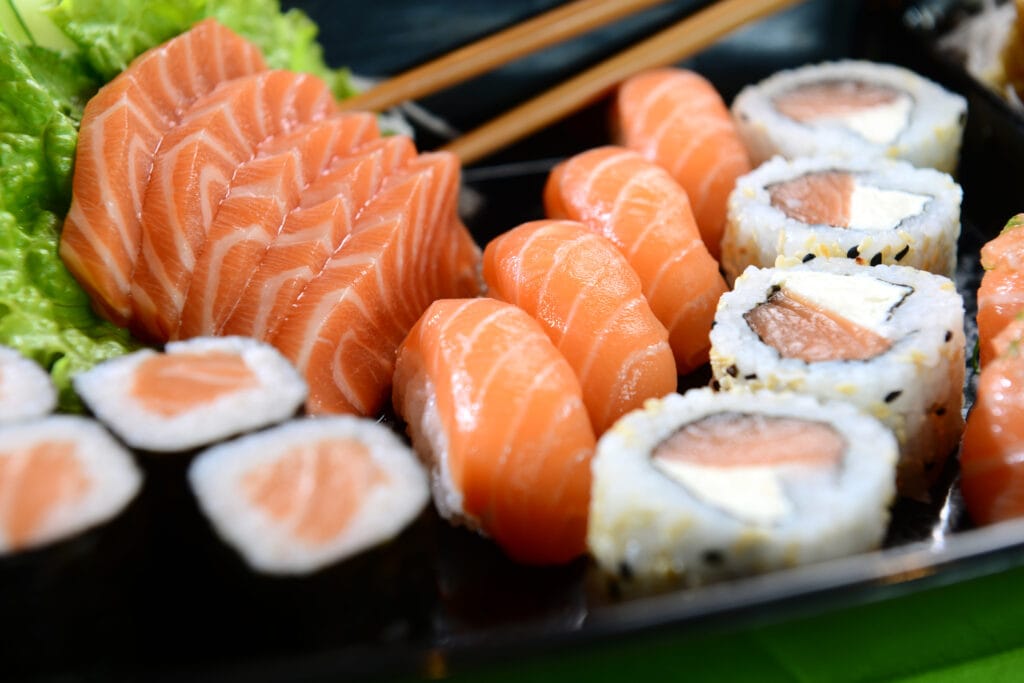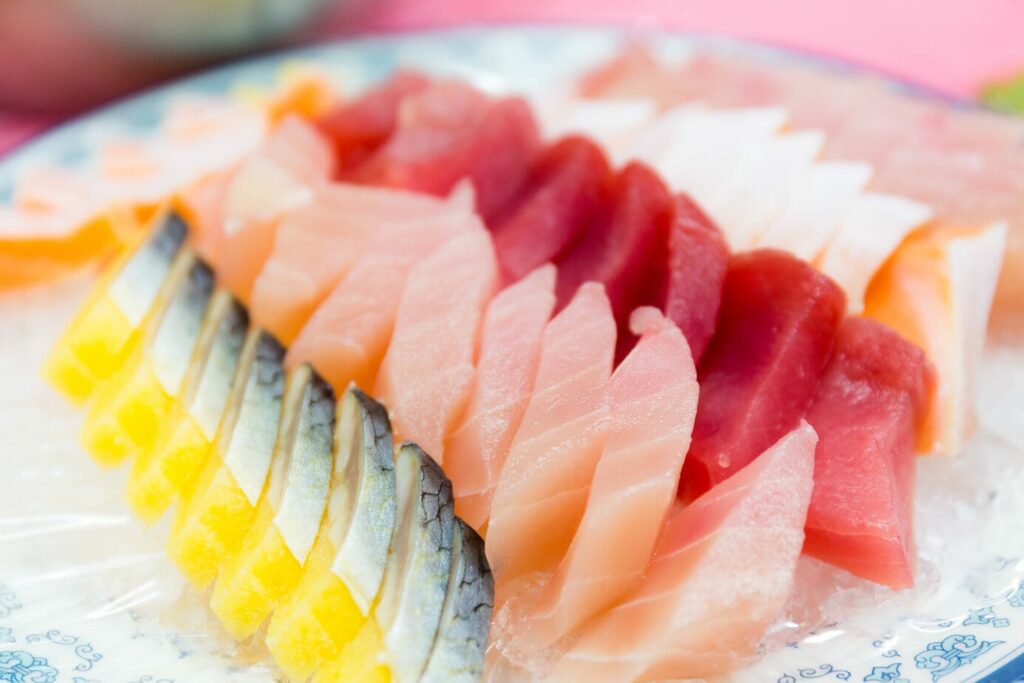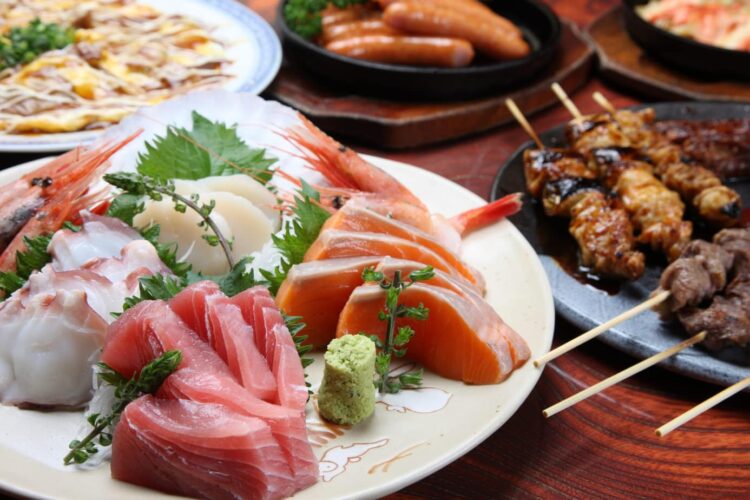If you’re wondering what sashimi is and whether it’s the same as sushi, don’t worry – you’re not the only one puzzled by these Japanese classics. I’ve got you covered. I’ll even explain how to eat it. (Spoiler: it goes in your mouth !)
What exactly is sashimi?
Sashimi is a Japanese dish made of thinly sliced raw ingredients, usually fish or seafood, though other meats are sometimes used.
Sashimi is often mistaken for sushi, but the two are quite different. Sushi is made with seasoned, vinegared rice. The rice is shaped into small mounds topped with raw or cooked seafood, or rolled in seaweed sheets called nori around fillings such as seafood, vegetables, and other ingredients.

The key point is that sushi always includes rice, whereas sashimi is only the raw ingredient served by itself.
Depending on the ingredient, sashimi can be cut into various shapes, including flat slices, thin strips, rectangles, cubes, or diagonal pieces. A razor-sharp knife and precise technique are essential so the slices come out smooth, uniform, and visually appealing. Appearance matters most here; the notion of “as long as it tastes good” does not apply.
In Japan, in addition to fish and seafood, sashimi is also made from thinly sliced raw meats such as beef, pork, chicken, and even horse, though fish and seafood remain the most common.
While most sashimi is served raw, some pieces are briefly seared, braised, pan-fried, or boiled to enhance flavor and texture and to reduce the risk of food poisoning.
Sashimi can be served on its own, with beer as a snack, as part of a light meal, or as an appetizer at the start of a multi-course dinner.
How do you eat sashimi?
Sashimi is served on a platter or dish, sometimes on a bed of shiso leaves or grated daikon radish, and it can be seasoned with ingredients like soy sauce, ginger, wasabi, and citrus. It is usually accompanied by a dipping sauce of soy sauce or ponzu, a citrus-flavored soy sauce.
To eat sashimi, pick up a piece with your chopsticks, dip it in the sauce, and enjoy it in one bite.
Sashimi vs sushi
Although many people assume that sashimi is a type of sushi, like temaki, they are actually two distinct dishes. Rice defines sushi, not the topping.

The word “sushi” comes from terms meaning “sour food” or “vinegared food,” a reference to the rice, not the fish. Traditional sushi rice is prepared with rice vinegar, salt, and sugar.
Sashimi, by contrast, roughly translates to “cut meat”, though the exact etymology is unclear.
In short, sushi and sashimi do share similarities. They’re both bite-sized, seasoned with soy sauce, ginger, and wasabi, and they both pair well with beer or sake. So let’s stop debating and start enjoying our plates.
Types of sashimi

Maguro (Tuna): Made from bluefin tuna, this fish is categorized by fat content. Akami comes from along the spine and is the leanest cut, while toro comes from the belly and is the fattiest.
Sake (Salmon) : Salmon is one of the most popular sashimi fish and, like tuna, the belly meat is fattier and more succulent. Because salmon can carry parasites, eating it raw can be risky. Use farmed salmon, which is parasite-free, or wild salmon that has been frozen to -20 C to kill any parasites.
Hamachi (Yellowtail): Another popular choice, hamachi has a rich, buttery flavor. The belly is usually served as sashimi, while the upper part of the fillet is often used for nigiri sushi.
Hirame (Halibut): This firm white fish has a mild flavor. Slices from the top of the fillet are white with hints of pink, while those from the bottom are gray with darker veins. It is best harvested in winter, when its fat content is highest, and can be aged for several days to maximize flavor and texture.
Saba (Mackerel): This fatty, strongly flavored fish is another favorite, especially when extremely fresh. It is often marinated with vinegar and salt before serving.
Tai (Sea bream): Another white fish, tai sashimi is firm and flavorful with a slightly sweet taste. It can be farmed or wild-caught and is traditionally dried between layers of kelp to heighten its umami.
Katsuo (Bonito): The fat content of this red-fleshed fish can vary, and its bold flavor means it is often served with green onions, ginger, and wasabi.
Other varieties of sashimi include ika (squid), tako (octopus), hotate (scallop), ikura (salmon roe), and uni (sea urchin).

